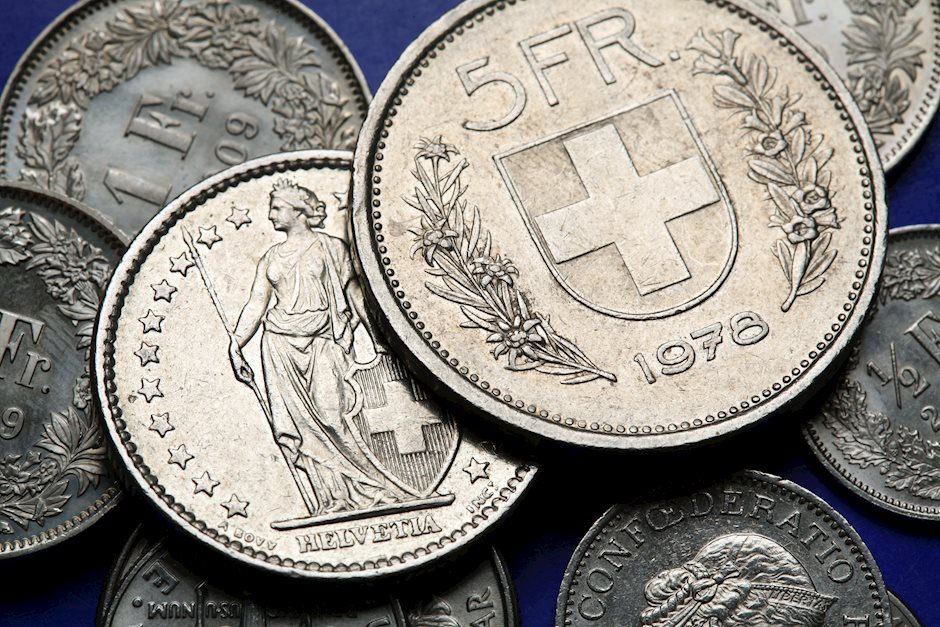USD/CHF falls to near 0.8500 as recent data increase odds of a bumper Fed rate cut
- USD/CHF depreciates as Thursday’s US data reinforce the likelihood of an aggressive Fed rate cut in September.
- Former New York Fed President William Dudley suggested a strong case for a 50 basis points rate cut next week.
- Traders expect the SNB to deliver a 25 basis points rate cut at its September meeting.

USD/CHF extends its losses for the second successive day, trading around 0.8490 during the Asian hours on Friday. The decline of the USD/CHF pair could be attributed to the subdued US Dollar (USD) following Thursday's economic data from the United States (US) reinforced the odds of a bumper rate cut by the Federal Reserve (Fed) next week.
According to the CME FedWatch Tool, markets are fully pricing at least a 25 basis point (bps) rate cut by the Federal Reserve at its September meeting. The likelihood of a 50 bps rate cut has sharply increased to 41.0%, up from 14.0% a day ago.
The decline in the US Treasury yields also contributes to the downward pressure for the Greenback. The US Dollar Index (DXY), which measures the value of the US Dollar against its six major peers, trades around 101.10 with 2-year and 10-year yields on US Treasury bonds standing at 3.58% and 3.64%, respectively, at the time of writing.
Former New York Fed President William Dudley suggested there is a strong case for a 50 basis points interest rate cut in the United States. Speaking at the Bretton Woods Committee's annual Future of Finance Forum in Singapore, Dudley remarked, "I think there's a strong case for 50, whether they're going to do it or not," per Reuters.
Last week, the Swiss Consumer Price Index fell to 1.1% year-on-year in August. Meanwhile, the monthly index showed no change against a 0.1% rise. This inflation report has further intensified speculation about an imminent rate cut by the Swiss National Bank (SNB) in September.
The market is anticipating a 25 basis points reduction at its September meeting. Traders will likely observe next week’s Trade Balance data to gauge the scale of interest rate cuts by the end of the year.
(This story was corrected on September 13 at 08:12 GMT to say that Thursday’s US data reinforce the likelihood of an aggressive Fed rate cut in September, not Friday's data.)
Swiss Franc FAQs
The Swiss Franc (CHF) is Switzerland’s official currency. It is among the top ten most traded currencies globally, reaching volumes that well exceed the size of the Swiss economy. Its value is determined by the broad market sentiment, the country’s economic health or action taken by the Swiss National Bank (SNB), among other factors. Between 2011 and 2015, the Swiss Franc was pegged to the Euro (EUR). The peg was abruptly removed, resulting in a more than 20% increase in the Franc’s value, causing a turmoil in markets. Even though the peg isn’t in force anymore, CHF fortunes tend to be highly correlated with the Euro ones due to the high dependency of the Swiss economy on the neighboring Eurozone.
The Swiss Franc (CHF) is considered a safe-haven asset, or a currency that investors tend to buy in times of market stress. This is due to the perceived status of Switzerland in the world: a stable economy, a strong export sector, big central bank reserves or a longstanding political stance towards neutrality in global conflicts make the country’s currency a good choice for investors fleeing from risks. Turbulent times are likely to strengthen CHF value against other currencies that are seen as more risky to invest in.
The Swiss National Bank (SNB) meets four times a year – once every quarter, less than other major central banks – to decide on monetary policy. The bank aims for an annual inflation rate of less than 2%. When inflation is above target or forecasted to be above target in the foreseeable future, the bank will attempt to tame price growth by raising its policy rate. Higher interest rates are generally positive for the Swiss Franc (CHF) as they lead to higher yields, making the country a more attractive place for investors. On the contrary, lower interest rates tend to weaken CHF.
Macroeconomic data releases in Switzerland are key to assessing the state of the economy and can impact the Swiss Franc’s (CHF) valuation. The Swiss economy is broadly stable, but any sudden change in economic growth, inflation, current account or the central bank’s currency reserves have the potential to trigger moves in CHF. Generally, high economic growth, low unemployment and high confidence are good for CHF. Conversely, if economic data points to weakening momentum, CHF is likely to depreciate.
As a small and open economy, Switzerland is heavily dependent on the health of the neighboring Eurozone economies. The broader European Union is Switzerland’s main economic partner and a key political ally, so macroeconomic and monetary policy stability in the Eurozone is essential for Switzerland and, thus, for the Swiss Franc (CHF). With such dependency, some models suggest that the correlation between the fortunes of the Euro (EUR) and the CHF is more than 90%, or close to perfect.
Author

Akhtar Faruqui
FXStreet
Akhtar Faruqui is a Forex Analyst based in New Delhi, India. With a keen eye for market trends and a passion for dissecting complex financial dynamics, he is dedicated to delivering accurate and insightful Forex news and analysis.

















